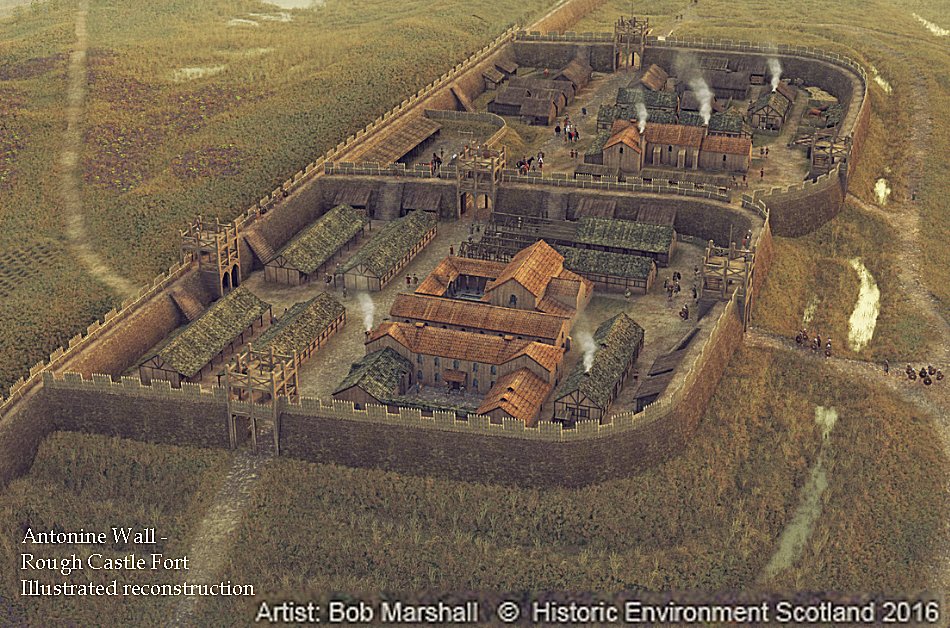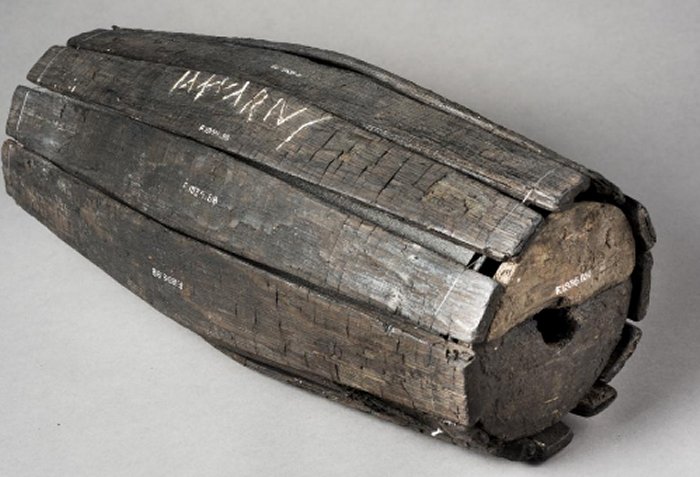Antonine Wall: Impressive Roman Frontier Built By Empire’s Three Legions In Scotland
A. Sutherland - AncientPages.com - The Hadrian Wall lost its importance when Roman Emperor Hadrian's successor, Antonius Pius (138 - 161), launched a successful military campaign in southern Scotland early in his reign and began constructing the Antonine Wall.
Image credit: Artist Bob Marshall - Historic Environment Scotland 2016
The Romans started to build the Antonine Wall in Britain only fifteen years after the
construction of Hadrian's Wall was completed. It is known that the famous Hadrian's Wall was built for both military and economic needs.
The Wall would also prevent raiders from the north from destroying the strategic Roman base at Corbridge in Northumberland.
The Antonine Wall was constructed by another second-century emperor even further north of Hadrian's Wall. The unrest from the north must have been palpable to dictate the construction of such massive formations.
From 155 to 157 CE, the Brigantes revolted in Scotland. They were ancient Britons who, in pre-Roman times, controlled the most extensive section of what would become Northern England -
The Antonine Wall's ruins are less visible than those of the Hadrian's Wall. It is mainly due to the hazardous building material - turf- used to construct the Wall. However, it is evidenced by the construction of foundations that the Romans planned to erect a stone wall.
The soldiers of the Second Augusta, the Sixth Victrix, and the Twentieth Valeria Victrix legions (also responsible for the building of Hadrians Wall) began to construct the Antonine Wall in AD 142 at the order of Roman Emperor Antoninus Pius.
The structure that runs across what is now the Central Belt of Scotland, between the Firth of Forth and the Firth of Clyde, was the Roman Empire's northernmost frontier barrier.
A wooden barrel, with the owner's name, scratched into it. Image credit: Hunterian Museum
The work took about 12 years to complete. These legions erected stone slabs on completion of their work and are the records of the length of the Wall they completed, the emperor's name, and the legion's name.
The slabs are unique because no similar slabs are known from any frontier of the Roman Empire.
Originally six forts were planned (Carriden, Mumrills, Castlecary, Bar Hill, Balmuildy, and Old Kilpatrick), with several fortlets built in between. Later, these fortlets were abandoned, and the next ones were constructed.
The Antonine Wall (named after the Roman emperor Antoninus Pius) was an impressive barrier with a height of 4 meters, 4.3 meters wide, with a large ditch on the north side for reinforcement of defense and a network of roads on the south side for the efficient movement of troops. It was 63 km (39 miles) long, with 19 forts every 3.3 km.
 Left: Found at Carleith, Dunochter, before 1699. Translates as " For the Emperor Antonius Augustus Pius, Father of this country, the Second Augustan Legion completed 3271 feet (of the wall)" Greyish buff sandstone; Right: Unknown provenance - donated to Glasgow University in 1695; Translated as "For the Emperor Caesar Titus Aelius Hadrianus Antoninus Augustus Pius, Father of this Country, a detachment of the Twentieth Valerian and Victorius Legion; Image credit: University of Glasgow, Scotland
Left: Found at Carleith, Dunochter, before 1699. Translates as " For the Emperor Antonius Augustus Pius, Father of this country, the Second Augustan Legion completed 3271 feet (of the wall)" Greyish buff sandstone; Right: Unknown provenance - donated to Glasgow University in 1695; Translated as "For the Emperor Caesar Titus Aelius Hadrianus Antoninus Augustus Pius, Father of this Country, a detachment of the Twentieth Valerian and Victorius Legion; Image credit: University of Glasgow, Scotland
As early as 162 AD (only eight years after its completion), the Romans from this line were forced to retreat to the south again and return to the older fortification - Hadrian's Wall - after it was strengthened.
Unfortunately for the Romans, the Wall was abandoned, recaptured a year later, and finally, entirely abandoned by 164 CE.
Left: Altar to ‘the Spirit of the Land of Britain’. © Hunterian Museum; Right: Tombstone of Verecunda © Hunterian Museum
Archaeological excavation conducted in the ruins of the Wall revealed many Roman artifacts, both military and domestic. When the Romans abandoned a fort, they usually buried many possessions they did not wish to salvage and take with them. They did not want them to be used by local people.
Except for decorative slabs, the Romans also left altars, tombstones, personal possessions, and building materials, which were well-preserved, well-buried, and, therefore, never touched by robbers.
Written by – A. Sutherland AncientPages.com Staff Writer
Updated on April 18, 2023
Copyright © AncientPages.com All rights reserved. This material may not be published, broadcast, rewritten or redistributed in whole or part without the express written permission of AncientPages.com
Expand for referencesReferences:
Harper W. The Antonine Wall (Defenders of Rome, Book 4)
More From Ancient Pages
-
 The Anglo-Saxon Migration: New Insights From Genetics
Archaeology | Sep 21, 2022
The Anglo-Saxon Migration: New Insights From Genetics
Archaeology | Sep 21, 2022 -
 Eclipse Was A Bad Omen, A Sign Of Gloom And Doom In Ancient Peoples’ Beliefs
Featured Stories | Sep 25, 2015
Eclipse Was A Bad Omen, A Sign Of Gloom And Doom In Ancient Peoples’ Beliefs
Featured Stories | Sep 25, 2015 -
 3,000-Year-Old Stone Scarab Seal Depicting A Pharaoh Discovered In Israel
Archaeology | Dec 2, 2022
3,000-Year-Old Stone Scarab Seal Depicting A Pharaoh Discovered In Israel
Archaeology | Dec 2, 2022 -
 On This Day In History: The Battle Of Actium Took Place On Sep 2, 31 BC
News | Sep 2, 2016
On This Day In History: The Battle Of Actium Took Place On Sep 2, 31 BC
News | Sep 2, 2016 -
 Race To Save Magnificent Underwater Stone Age Paintings Hidden In The Cosquer Cave
Archaeology | Jun 6, 2022
Race To Save Magnificent Underwater Stone Age Paintings Hidden In The Cosquer Cave
Archaeology | Jun 6, 2022 -
 The Strange Story Of The Grave Of Copernicus
Featured Stories | Jan 5, 2024
The Strange Story Of The Grave Of Copernicus
Featured Stories | Jan 5, 2024 -
 Study Of Ancient Skulls Sheds Light On Human Interbreeding With Neandertals
Archaeology | Aug 23, 2022
Study Of Ancient Skulls Sheds Light On Human Interbreeding With Neandertals
Archaeology | Aug 23, 2022 -
 Chilling Graffiti Found In 1,600-Year-Old Roman Prison In Corinth, Greece
Archaeology | Aug 19, 2024
Chilling Graffiti Found In 1,600-Year-Old Roman Prison In Corinth, Greece
Archaeology | Aug 19, 2024 -
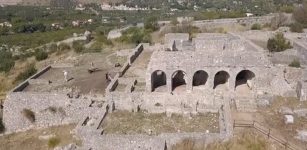 Was Beautiful Ancient City Of Terracina Home To The First Hellenistic Temple?
Archaeology | Dec 16, 2019
Was Beautiful Ancient City Of Terracina Home To The First Hellenistic Temple?
Archaeology | Dec 16, 2019 -
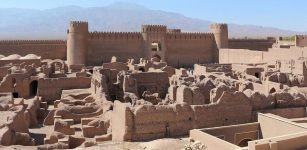 Graves Dated To Achaemenid Or Parthian Empire – Found In Iran
Archaeology | Aug 15, 2018
Graves Dated To Achaemenid Or Parthian Empire – Found In Iran
Archaeology | Aug 15, 2018 -
 Did The Plague Of Athens Come From Egypt Or Is It A Myth?
Archaeology | Dec 13, 2023
Did The Plague Of Athens Come From Egypt Or Is It A Myth?
Archaeology | Dec 13, 2023 -
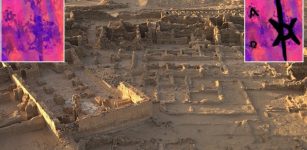 Rare Medieval Tattoo Depicting A Christogram Unearthed In Ghazali, Sudan
Archaeology | Nov 9, 2023
Rare Medieval Tattoo Depicting A Christogram Unearthed In Ghazali, Sudan
Archaeology | Nov 9, 2023 -
 Obscure History Of Atlantean Statues In Ancient Toltecs’ City Of Tula
Artifacts | Oct 19, 2020
Obscure History Of Atlantean Statues In Ancient Toltecs’ City Of Tula
Artifacts | Oct 19, 2020 -
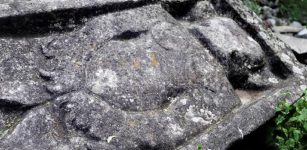 Pre-Hispanic Carved Stone Monuments Discovered On A Mountaintop In Puebla, Mexico
Archaeology | Jul 25, 2020
Pre-Hispanic Carved Stone Monuments Discovered On A Mountaintop In Puebla, Mexico
Archaeology | Jul 25, 2020 -
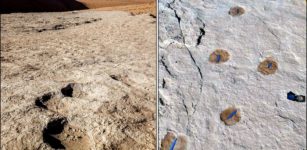 120,000-Year-Old Human Footprints Discovered In Saudi Arabia
Archaeology | Sep 18, 2020
120,000-Year-Old Human Footprints Discovered In Saudi Arabia
Archaeology | Sep 18, 2020 -
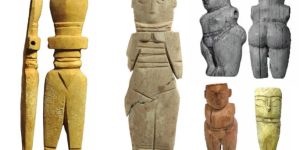 Ancient Wooden ‘Coptic Dolls’ May Have Been The Ancestors Of Today’s Barbie Dolls
Archaeology | Sep 23, 2023
Ancient Wooden ‘Coptic Dolls’ May Have Been The Ancestors Of Today’s Barbie Dolls
Archaeology | Sep 23, 2023 -
 Richard The Lionheart: Famous Leader, Warrior And Military Mastermind But Not The Best English King
Featured Stories | May 29, 2017
Richard The Lionheart: Famous Leader, Warrior And Military Mastermind But Not The Best English King
Featured Stories | May 29, 2017 -
 Evidence Of Europe’s Earliest Human Presence, Dating Back 1. 3 Million Years Found At Venta Micena, Iberian Peninsula
Evolution | Jul 13, 2024
Evidence Of Europe’s Earliest Human Presence, Dating Back 1. 3 Million Years Found At Venta Micena, Iberian Peninsula
Evolution | Jul 13, 2024 -
 LIDAR Discovers Mysterious Maya Underground Chamber In The Rainforest
Archaeology | Jul 22, 2024
LIDAR Discovers Mysterious Maya Underground Chamber In The Rainforest
Archaeology | Jul 22, 2024 -
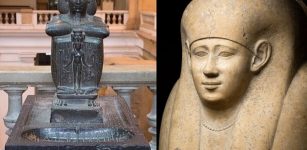 Ancient Secrets Of The Black Basalt Statue Of Priest Djedhor Revealed
Artifacts | Feb 26, 2021
Ancient Secrets Of The Black Basalt Statue Of Priest Djedhor Revealed
Artifacts | Feb 26, 2021

